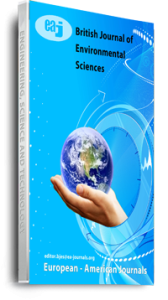This study evaluates the physico-chemical parameters in parts of the Sombrero and Orashi Rivers (Agba-Ndele and Ikiri) in the Niger Delta over three months (June to August 2024). Parameters were obtain from the down, mid and up stream, and determined based on standard oceanographic methods PHA, 2004. The surface water samples were collected at a depth of above 15-20cm dark coloured glass bottles measuring 250ml, were used for DO/BOD and water collected were also used for general purpose analysis. The results indicate that Agba-Ndele River exhibited higher turbidity (2.43–2.04 NTU), total suspended solids (3.41–4.12 mg/l), and biological oxygen demand (0.7–3.7 mg/l), alongside lower dissolved oxygen (3.3–7.07 mg/l) levels. In contrast, the Ikiri River displayed lower turbidity (0.80–1.86 NTU), total suspended solids (1.60–3.88 mg/l), and biological oxygen demand (1.5–2.1 mg/l), with higher dissolved oxygen levels (6.3–6.22 mg/l). Chemical oxygen demand ranged from 0.873–5.06 mg/l for Agba-Ndele and 0.813–4.42 mg/l for Ikiri. Both rivers had alkaline pH values (8.43–9.98), with electrical conductivity measuring 12.36–14.20 µs for Agba-Ndele and 4.56–12.99 µs for Ikiri. The result further showed that Nutrient analysis indicated phosphate levels of 5.582–6.740 mg/l for Agba-Ndele and 5.083–7.011 mg/l for Ikiri, while nitrate concentrations were 0.950–2.927 mg/l for Agba-Ndele and 1.373–3.469 mg/l for Ikiri. The findings indicate that both rivers face distinct water quality challenges, showing signs of stress from industrial activities, agricultural runoff, urbanization, and other anthropogenic activities. This research underscores the need for targeted water quality management strategies to safeguard these vital ecosystems and support community health and resilience in the Niger Delta.
Keywords: Niger-Delta, Orashi rivers, physico-chemical properties., sombrero

